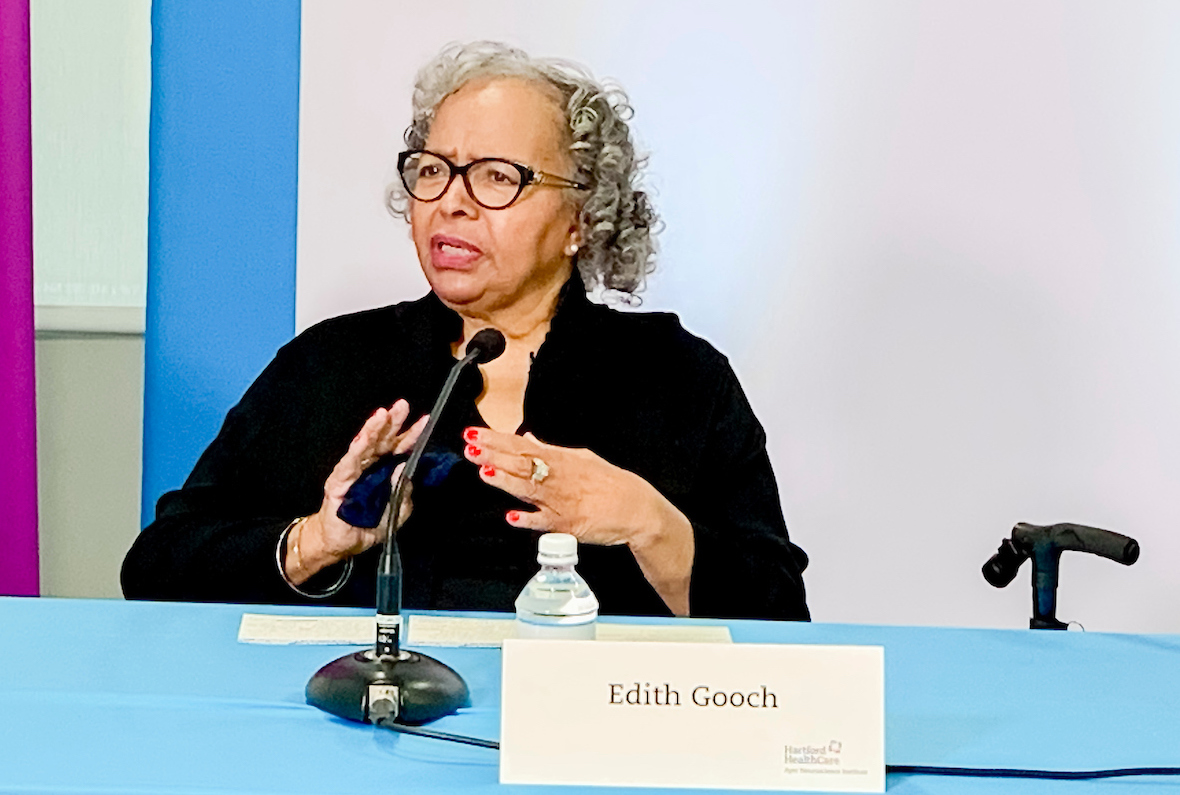<< Back
First Awake Spinal Fusion in New England: Patient, 82, Says Back Pain Gone

November 15, 2021
Eighty-two-year-old Edith Gooch suffered for years from a debilitating spine disability. On. Oct. 1, she finally received the life-changing treatment she needed when she became the first patient to receive an awake spinal fusion in New England.
“There were tears. There were frowns. I couldn’t get my groceries, no cooking, basically just hanging out on the couch or the chair,” Edith, shown above, said of her life before surgery at a press conference Monday at the Ayer Neuroscience Institute Spine Wellness Center in Westport
The surgery, performed at St. Vincent’s Medical Center by Dr. Vijay Yanamadala, used spinal anesthesia and local nerve block to numb the area of Edith’s spine so he could remedy her chronic, debilitating disability caused by spondylolisthesis, a degenerative condition causing bones in the spine to press against nerves. In doing so, Edith did not need to be intubated.
“About 10 surgeons in the country are now offering spinal fusion without general anesthesia, like what we were able to do for Ms. Gooch and she was never intubated for this procedure,” said Dr. Yanamadala, Medical Director of Spine Quality and Surgical Optimization at Spine Wellness Center. “We know that this type of procedure avoids the risk of true general endotracheal anesthesia and also leads to faster recovery for patients.”
Dr. Yanamadala added that there have been 10 awake spine surgeries performed at St. Vincent’s Medical Center with more scheduled in the coming months. While Edith’s spinal fusion was the first in New England, awake spinal surgery is not new, but it is uncommon.
“It’s not very common for a reason, it takes a whole team,” said Dr. Khalid Abbed, Co-Physician-in-Chief of the Ayer Neuroscience Institute and Medical Director of Spine Wellness Center. “It takes surgeon champions; it takes anesthesiologists who are willing to think outside the box and catch up with the surgical techniques which have advanced and have become less invasive with time. For the right patient, minimizing the risk of anesthesia as well is prudent.”
Dr. Vlad Frenk, Co-Director of Anesthesia at the Ayer Neuroscience Institute/Connecticut Orthopaedic Institute at St. Vincent’s Medical Center, said the nerve block process used on Edith, called erector spinae block.
“The medication that we use lasts up to 36 hours, and it allows patients to decrease or completely abolish the use of strong opioids for the first day and a half or so after surgery,” Dr. Frenk said. “This procedure is done after the patients are sedated, so it’s comfortable and they don’t feel any pain or discomfort.”
Dr. Frenk added the advantages of spinal anesthesia allow patients to eat and drink in the recovery room within an hour of surgery and it can save patients from opioid-related side effects such as confusion, nausea and constipation that can be worse in elderly patients.
Nearly six weeks after surgery, Edith is no longer using a walker or cane for assistance and says she has had no leg or back pain.